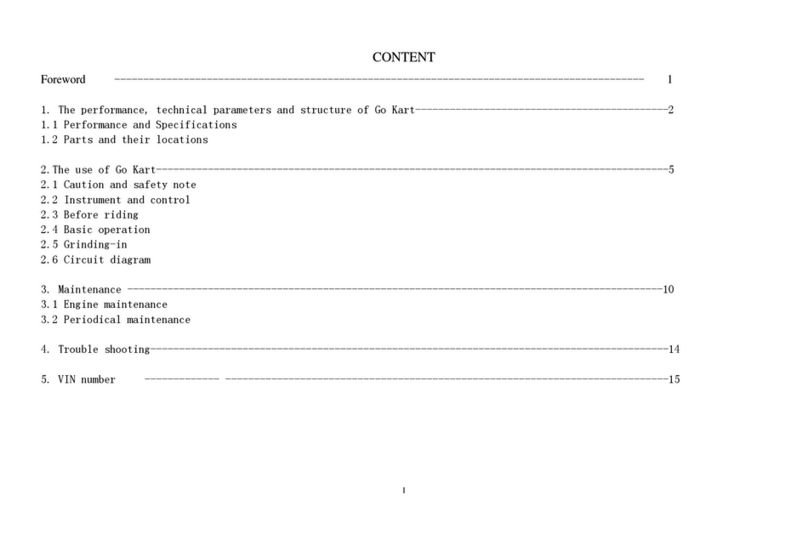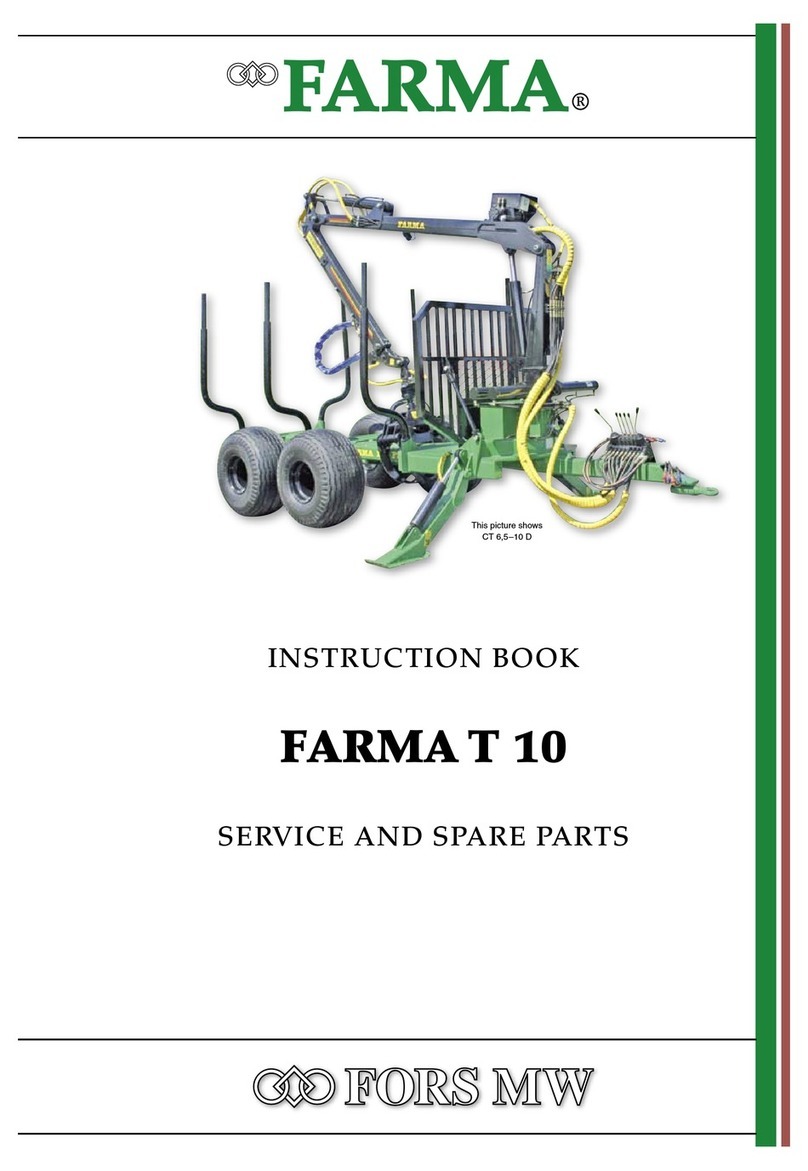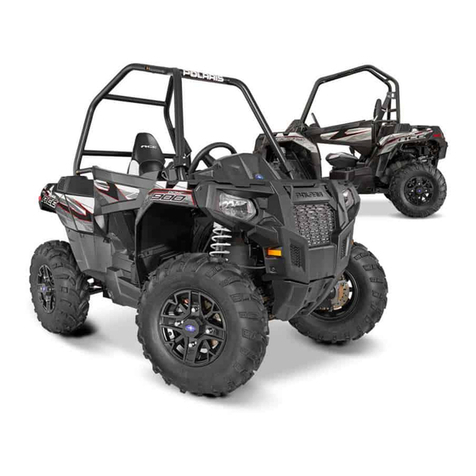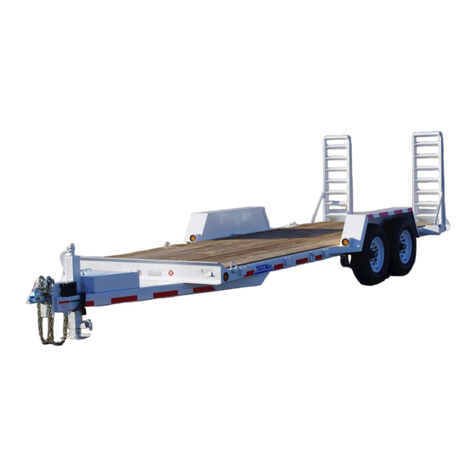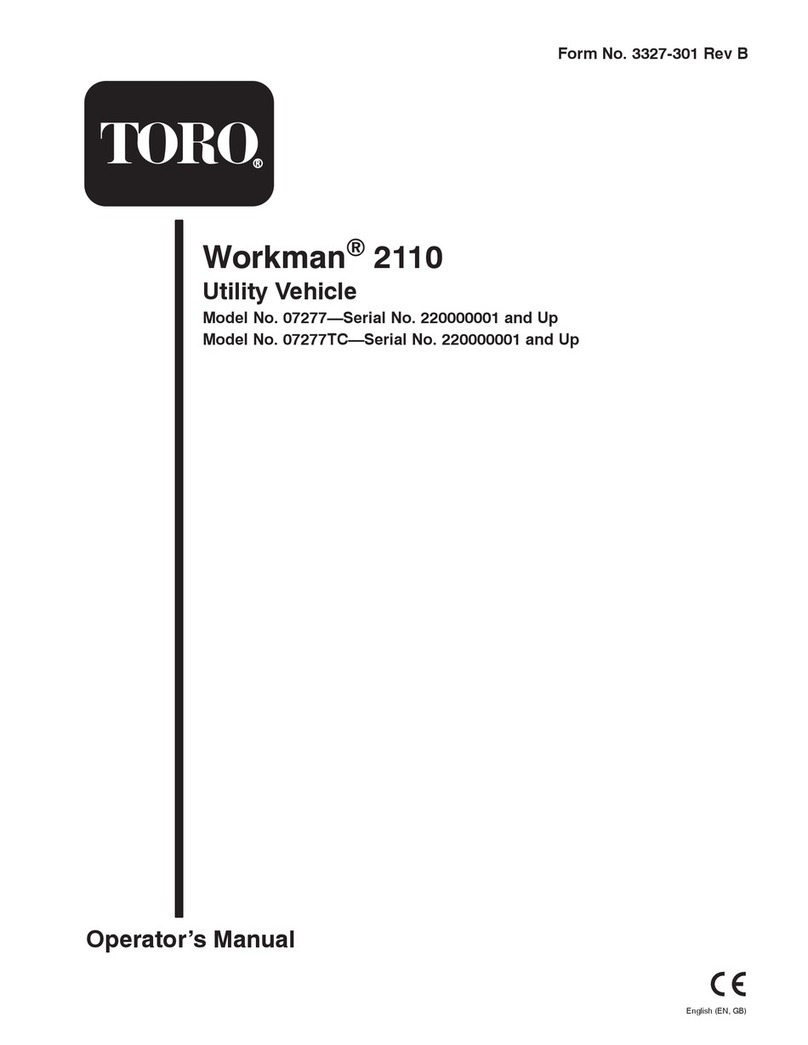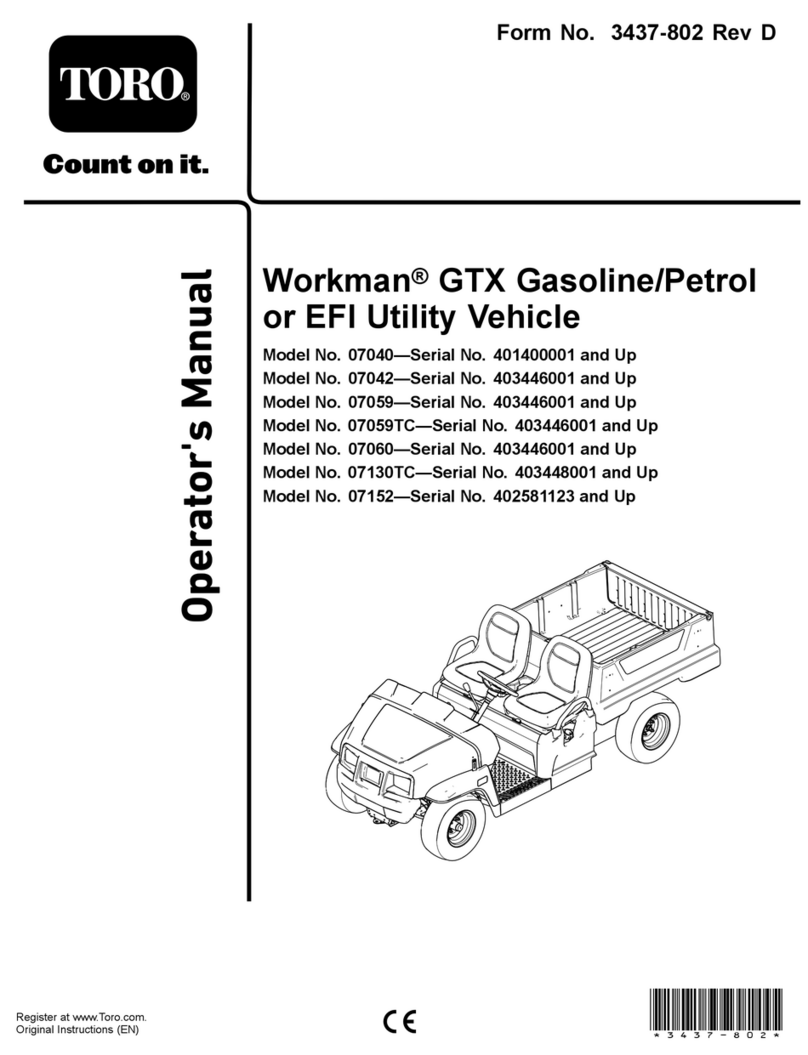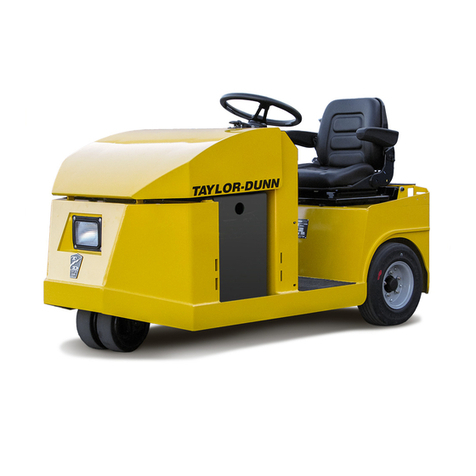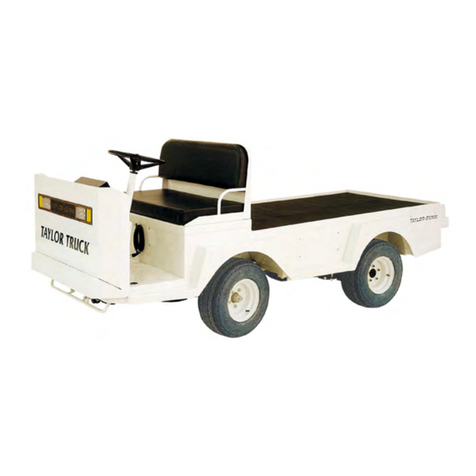Roketa GK-13 User manual

ROKETA
GK-13(KTX-250W)(L5G)
Comprehensive Owner’s Manual, Assembly Guide, and Parts List
(UNOFFICIAL)

CONTENTS Page
1. FOREWORD........................................................................ 1
2. A FEW WORDS ABOUT SAFETY........................................ 2
3. IMPORTANT SAFETY INFORMATION................................ 3
4. SAFETY LABELS.................................................................. 5
5. ARE YOU READY TO DRIVE? ............................................. 6
6. IS YOUR VEHICLE READY TO DRIVE? ............................. 8
7. SAFE DRIVING PRECAUTIONS........................................... 10
8. P.D.L .................................................................................… 12
9. SPECIFICATIONS................................................................. 13
10. OPERATION......................................................................... 14
11. SERVICE INSTRUCTIONS.................................................... 18
12. REPAIR...............................................................................… 20
Roketa GK-13 Combined Owner’s Manual


FOREWORD
Thank you for choosing our Go-Kart. We hope you will have fun with it.
Before you start operate on the Go-Kart, please read through this Owner's
Manual carefully as it contains important safety and maintenance
information failure to follow the warnings contained in this manual can
result in serious injuries.
Be sure to follow the recommended maintenance schedule and service
your kart accordingly. Preventive maintenance is extremely important to the
longevity of your Go-Kart.
Beginners should drive this Go-Kart in a large open area to practice
handle of this Go-Kart. Protective gears should be weared at all time when
driving or riding in this Go-Kart.
We hope you will have a pleasant experience with our products and
thanks again for choosing us.

In order to keep everyone safe, you must take responsibility for the safe
operation of your Co-Kart.
To help you make informed decisions about safety, we have provided operating
procedures and other information on labels and in this manual This information
alerts you to potential hazards that could hurt you or others.
it is not practical or possible to warn you about all hazards associated with
operating or maintaining a Go-Kart You must use your own good judgment
You will find important safety information In a variety of forms, including:
Safety Labels - On the Co-Kart.
Safety Messages - Preceded by a safety alert symbol and one of two signal
words: WARNING, or CAUTION.
These signal words mean:
A FEW WORDS ABOUT SAFETY
Physical harm may result from failure to adhere to the instructions that are
described within the WARNING labels.
Safety Headings — such as Important Safety Reminders or Important Safety
Precautions.
Safety Section — such as Go-Kart Safety.
Instructions — how to use this Go-Kart correctly and safely.
This entire manual is filled with important safety information—please read it
carefully.

IMPORTANT SAFETY INFORMATION
Your Go-Kart will provide you with many years of service and pleasure. Providing you
take responsibility for your own safety and understand the challenges you can meet
while driving.
There is much that you can do to protect yourself when you drive. You’ll find many
helpful recommendations throughout this manual. The following are a few that we
consider most important.
Follow the Age Recommendation
It is strongly recommended that no one under the age of 16 be permitted to driv* this
Go-Kart without adult supervision.
Always Wear a Helmet
It's a proven fact: helmets significantly reduce the number and severity of head
injuries. Always wear an approved motorcycle helmet. We also recommend that you
wear eye protection, sturdy boots, gloves, and other protective gear
Drive Off-Road Only
Your Go-Kart is designed and manufactured for off-road use only. The tires are not
made for pavement, and the Go-Kart does not have turn signals and other features
required for use on public roads. If you need to cross a paved or public road, get off and
walk your Go-Kart across.
Take Time lo Learn & Practice
Even if you have driven other Go-Kart, take time to become familiar with how this Go-
Kart works and handles. Practice in a safe area until you build your skills and get
accustomed to this Go-Kart's size and weight.
Because many accidents involve inexperienced or untrained drives, we urge all
drivers to take a training course approved by the Go-Kart Safety Institute. Check with
your dealer for more information on training courses.
Be Alert for Off-Road Hazards
The terrain can present a variety of challenges when you drive off-road. Continually '
read" the terrain for unexpected turns, drop-offs, rocks, ruts, and other hazards. Always
keep your speed low enough to allow time to see and react to hazards.

IMPORTANT SAFETY INFORMATION
Drive within Your Limits
Pushing limits is another major cause of Go-Kart accidents, Never drive beyond your
personal abilities or faster than conditions warrant. Remember that alcohol, drugs,
fatigue, and inattention can significantly reduce your ability to make good judgments and
drive safely.
Don’t Drink and drive
Alcohol and driving don’t mix. Even one drink can reduce your ability to respond to
changing conditions, and your reaction time gets worse with every additional drink. So
don’t drink and drive, and don’t let your friends drink and drive either.
Do not operate this Go-Kart at night
Dark vision can greatly reduce a driver’s visibility and judgment. So driving at night is
dangerous and can increase possibility for accident.
Never run your Go-Kart indoors.
The exhaust from the engine contains a tasteless, odorless and poisonous gas called
carbon monoxide.
Keep away from moving parts of the Go-Kart
The operator of the Go-Kart should never place their hands or other parts of their
body near any moving part of the Go-Kart. Failure to adhere to this warning will cause
physical harm to your body.
Skidding or Sliding
The terrain surface can be a major factor affecting turns. Skidding a turn is more
likely to occur on slippery surfaces such as snow, ice, mud and loose gravel. If you skid
on ice, you may lose all directional control. To avoid skidding on slippery terrain, keep
your speed low and drive carefully.

SAFETY LABELS
This section presents some of the most important information and
recommendations to help von drive your Go-Kart safely Please take a few moments
to read these pages.
The labels should be considered permanent parts of the Go-Kart. If a label
comes off or becomes hard to read, contact your dealer for warning labels
replacements.

ARE YOU READY TO DRIVE?
Before each drive, you need to make sure you and your Go-Kart are both ready to
drive. To help get you prepared, this section discusses how to evaluate your driving
readiness, what items you should check on your Go-Kart, and adjustments to make for
your comfort, convenience, or safety.
Before you drive your Go-Kart for the first time, we urge you to:
• Read this owner s manual and the labels on your Go-Kart carefully
• Make sure you understand all the safety messages
• Know how to operate all the controls
• Have adult present if under 16 years old
Before each drive, be sure:
• You feel well and are in good physical and mental condition
• You are wearing an approved motorcycle helmet (with chin strap tightened securely),
eye protection, and other protective clothing.
• You don't have any alcohol or drugs in your system.
Protective Apparel
For your safety, we strongly recommend that you always wear an approved
motorcycle helmet, eye protection, boots, gloves, long pants, and long-sleeved shirt or
jacket whenever you drive
Although complete protection is not possible, wearing proper gear can reduce the
chance of injury when you drive.
The following suggestions will help you choose the proper driving gear
Helmets and Eyes Protection
Your helmet is your most important piece of driving gear because it offers the best
protection against head injuries. A helmet should fit your head comfortably and securely.
An open-face helmet offers some protection, but a full-face helmet offers more
Regardless of the style, look for a DOT (Department of Transportation) 5ticker in any
helmet you buy. Always wear a face shield or goggles to protect your eyes and help your
vision.

ARE YOU READY TO DRIVE ?
Additional Driving Gear
In addition to a helmet and eye protection, we also recommend:
• Sturdy off-road motorcycle boots to help protect your feet ankles, and lower
legs
• Off-road motorcycle gloves to help protect your hands.
• Driving pants with knee and hip pads, a driving jersey with padded elbows, and
a chest/shoulder protector.
Driver Training
Developing your driving skills is an on-going process Even if you have driven other Go-
Karts, take time to become familiar with how this Go-Kart works and handles. Practice
driving tin Go-Kart in a safe area to build your skills. Do not drive in rough terrain until you
get accustomed to the Go-Kart's controls, and feel comfortable with its size and weight.
Age Recommendation
It is strongly recommended that no one under the age of 16 be permitted to operate this
Go-Kart without adult supervision.
No Alcohol or Drugs
Alcohol, drugs and Go-Karts don't mix. Even a small amount of alcohol can impair your
ability to operate a Go-Kart safely. Likewise, drugs - even if prescribed by a physician - can
be dangerous while operating a Go-Kart. Consult your doctor to be sure it is safe to operate
a vehicle after taking medication.

IS YOUR VEHICLE READY TO DRIVE ?
Before each drive, it is important to inspect your Go Kart and make sure any
problems you find are corrected. A pre-drive Inspection is a must. not only for safety,
but because having a breakdown, or even a flat tire, can be a major inconvenience.
If your Go-Kart has overturned or has been involved in a collision, do not drive it
until your Go-Kart has been inspected by your dealer. There may be damages or
other problems you cannot see.
Pre-drive inspection
Check the following Items before you get on the Go-Kart:
• Engine Oil
Check the level and add oil if needed. Check for leaks.
• Fuel
Check the level and add fuel if needed. Also make sure the fuel fill cap is securely
fastened. Check for leaks.
• Tires"
Use a gauge to check the air pressure. Adjust if needed. Also look for signs of
damages or excessive wear.
• Nuts & bolts
Check the wheels to see that the axle nuts are tightened. Use a wrench to make sure
all accessible nuts, bolts, and fasteners are tight.
• Underbody it Exhaust System
Check tor and remove any dirt, vegetation or other debris that could be fire hazard or
interfere with the proper operation of the Go-Kart.
• Air Cleaner Housing Drain Tube
Check for deposits in the drain tube. If necessary, clean the tube and check the air
cleaner housing.

IS YOUR VEHICLE READY TO DRIVE ?
• Leaks. Loose Parts
Walk around your Go-Kart and look for anything that appears unusual, such as a leak
or loose cable.
• Lights
Make sure the headlight, brake light and tail light are working properly.
• Throttle
Check the freeplay and adjust if needed. Press the throttle to make sure it moves
smoothly without sticking, and snaps back automatically when it is released.
• Brakes
Press the rear brake pedal several times, check for proper brake pedal freeplay. Make
sure there is no brake fluid leakage.
• Engine Stop Button
When engine is running, press and hold the Engine Stop Button for two seconds.
Make sure engine stops.
• Steering Wheel
Check that the wheels turn properly as you tum the steering wheel.
• Cable
Check the cable housing for wear. Check the fittings for looseness. Replace or tighten
as needed.

SAFE DRIVING PRECAUTIONS
Off-road Use Only
Your Go-Kart and its tires are designed and manufactured for off-road use only, not for
pavement. Driving on pavement can affect handling and control You should not drive your
Go-Kart on pavement.
When driving off-road, also remember to always obey local off-road driving laws and
regulations. Obtain permission to drive on private property. Avoid posted areas and obey
“no trespassing” signs.
You should never drive your Go-Kart on public streets, roads or highways, even if they
are not paved. Drivers of street vehicles may have difficulty seeing and avoiding you, which
could lead to a collision. In many stales, it is illegal to operate Go-Karts on public streets,
roads and highways
Keep Hands and Feet on Controls
Always keep both hands on the steering wheel and both feet on the foot controls. When
driving your Go-Kart, it is important to maintain your balance and to control of the Go-Kart.
Removing hands or foot away from the controls can reduce your ability to react control of the
kart.

SAFE DRIVING PRECAUTIONS
Control Speed
Driving at excessive speed increases the chance of an accident In choosing a proper
speed, you need to consider the capability of your Go-Karl, the terrain, visibility and
other operating conditions, plus your own skills and experience
Use Care on Unfamiliar or Rough Terrain
Before driving in a new area, always check the terrain thoroughly. Don't drive fast
on unfamiliar terrain or when visibility is limited. (It s sometimes difficult to see
obstructions like hidden rocks, bumps, or holes in time to react.)
Do Not Perform Stunts
You should always operate your Go-Kart in a safe and reasonable manner. When
driving, always keep all four wheels on the ground.
Never drive past the limit of visibility. Maintain a safe distance between your Go-
Kart and other off-road vehicles. Always exercise caution md use extra care on
rough, slippery anti loose terrain.

a. Install RR (rear) Shocks and tighten the nuts.
b. Install Ball Head, Tie Rod, tighten the Castle Nut and insert the cotter Pin.
c. Install Front Tires and tighten the nuts
d. Install Rear Tires, tighten the nuts and insert cotter Pin.
e. Put the protection pole cover on the frame as what picture shows
f. Install the bolts and washers, then tighten the nuts.
g. Install the two scats, Fix them in place with bolts and nuts from the bottom of the
frame.
h. Fill the fuel tank with Unleaded Gasoline and turn on the ignition switch to start the
engine.
P.D.I.

SPECIFICATIONS
item DIMENSIONS
SQCKA SQ-GKI! I SQ-GKB
Overall Length 2270 mm 2300 mm 2300 mm
Overall Width 1160 mm 1415 mm 1640mm
Overall Height 1152 mm 1232 mm 1470 mm
Wheelbase 1720 mm 1785 mm 1780 mm
Front Track 1180 mm 1415 mm 1360 mm
Rear 1 rack 1080 mm 1370 mm 1350mm
Ground Clearance 225 mm 225 mm 245 mm
ENGINE
Type Single Cylinder, 4-stroke.
Water-cooled.
Single Cylinder, 4-stroke,
Water-cooled
Single Cylinder,4-stroke,
Water-cooled
Engine Capacity 244.29 cc 244.29 cc 244.29 cc
Bore x Stroke 72 mm X 60 mm 72 mm x 60 mm 72 mm X 60 mm
Compression Ratio 10,3:1 10.3 :1 10.3: 1
Carburetor PD30J PD30J PD30J
Maximum Output Power 10,5/7,000kw/r/min 10,5/7,000kw/r/min 9,5/6,000kw/r/min
Maximum Torque 17.6/5500Nm/r/min 17.6/5500Nm/r/min 17.5/4100Nm/r/min
Starting Electric Electric Electric
Ignition C.D.I. C.D.I.. C.D.I.
Lubrication Force & Splash Force & Splash Force & Splash
Transmission Automatic (C.V.T. System) Automatic (C.V.T. System) Automatic (C.V.T. System)
Spark Plug NGK DPR8EA-9 NGK DPR8EA-9 DTRTC
Plug Gap 0.8-0.9mm 0.8-0.9mm 0.6-0.7mm
Fuel Type RQ90 (unleaded) RQ90 (unleaded) RQ90 (unleaded)
Lubricate Oil SAE 15W/40 SAE 15W/40 SAE 15W/40 SF
CAPACITIES
Maximum Load 300kg 300kg 300kg
Fuel Tank 9L 9L 9L
Engine Oil 0.85L 0.85L 0.85L
Starting <15s <15s <15s
Climbing >30* >30* >30*
Battery 12V 11 Ah 12V 11 Ah 12V 11Ah
Head Light 12 V 15W 12V 15W 12V 35/35 W
Tail Light 12 V 10W 12V 10W 12V 21/5W
Fuse 10A 10A 10A
Brake Track <7m (30km/h) <7m (30km/h) <7m (30km/h)
Top Speed >60Km/h >60km/h >60km/h
CHASSIS
Front Rear Brake Hydraulic disc, left foot control
Hydraulic disc, left fool control
Hydraulic disc, left fool control
Front tire 19X7-8 19X7-8 20.5X7-10
Rear Tire 22X11-10 22X11-10 20.5X10-10
Front Suspension Independent Dual A-Arm Independent Dual A-Arm Independent Dual A-Arm
Rear Suspension
Swing Arm/Double Oil Damped
Shock
Swing Arm/Double Oil
Damped Shock
Swing Arm/Double Oil Damped
Shock
Restraint System Dual 3-point Harness Dual 3-point Harness Dual 3-point Harness
Fiinal Drive Chain 10A Chain 10A Chain 10A Chain
TIRE PRESSURE
Front 10 PSI 10 PSI 7 PSI
Rear 15 PSI 15 PSI 15 PSI
WEIGHT
Net Weight 265kg 305kg 308kg
WARRANTY
Parts and Workmanship 90 Days 90 Days 90 Days

OPERATION
1. Operation Controls
WARNING - Do not attempt to start or operate the engine until completely familiar with the
location and use of each control necessary to operate this vehicle. The operator must know how
to stop tins machine before starting and driving it.
Throttle
The right foot pedal is the throttle that controls the Go-Kart speed As the engine speed
increased above idle, the clutch automatically engages and moves the vehicle forward. To
disengage the clutch at any time, allow the throttle to return to the idle position, (See picture
1).
Brake
The brake is located on the left side of the kart (See Picture 1). Applying pressure to the
pedal draws the brake caliper around the brake pump at the rear wheel and slows or stops the
kart,
Start engine
Insert the key into key-switch, turn the key clockwise, release the key when the engine starts.
The engine will warm up within 5 minutes and the engine choke will close automatically and
operate at normal RPM (Warning: Don't crank starter longer than 5 seconds at one time).
Engine stop button
Important: stop button test. Before driving
this vehicle, test the Engine Stop Button to
assure that it is operating properly. With the
engine running, push and hold the Engine Stop
Button for two seconds for the engine to shut down.

OPERATION
Check for Engine Oil Level. Check for leaks, add oil if required.
Check for Fuel Level. Add fuel as necessary and do not overfill. Check for leaks.
Check the brakes. Depress the rear brake pedal several times, then check for proper brake
pedal free play. Make sure there is no brake fluid leakage. Adjust if necessary.
Check Tires. Check tires condition and pressure. The pressures on Front and Rear lire
are15kPa and 20kPa, respectively.
Check Drive Chain. Check for drive chain's condition and tension. Lubricate if necessary.
Check Throttle. Check for smooth operation. Assure throttle “snaps” back to idle.
Check Engine Stop Button. Perform engine stop button test Repair as necessary.
Check all Nuts, Bolts, and fasteners. Check wheels to see that all axle nuts and lug nuts are
tightened properly. Check and tighten as necessary all other fasteners to specified condition.
Check Roll Cage Bar. Ensure all protective roll cage bars are in place before operating the GO-
KART.
Check Brake Light. Check for proper operation.
Check Wheels. Cheek for tightness of wheel nuts and axle nuts. Check that axle nuts are
secured by cotter pins.
Check Steering. Check for free operation for any unusual looseness in any area.
Component locations
1.Front Tire 2.Front Shock 3.Swing Arm (Upper) 4.Brake Pedal 5.Throttle Pedal 6.Parking Brake
7.Reverse Lever 8. Seat 9.Seat Belt 10.Rear Swing Arm 11.Rear Tire 12.Rear Shock 13.Engine
Assembly 14.Water Tank 15.Fuel Tank 16,Battery 17.Auxiliary Water Tank 18.Protective Roll Cage Bar
19.Steering Wheel 20.Control Panel 21.Front light 22.Front Basket 23.Direction Machine 24.Frame
25.Turning Shore 26. Swing Arm, Front
Picture 2
2. Pre-Drive Inspection

OPERATION
3. Passengers
The vehicle allows for two riders only. Combined maximum weight of driver anti the
passenger should not exceed 180Kg or 400lbs.
4. Seat Adjustment
The seat must always be securely fastened in
the position which best affords the operator
control of the foot pedals, steering wheel, and the
remote stop button.
Pull seat adjustment handle upward to
disengage seat slide.
Move seat to desired position.
Be sure seat adjustment handle snaps back
into place and that seat is locked into position.
5. Reverse Adjustment
Press down the reverse lever to the "D"
position so that the unit can move forward; pull
back the lever to “R" so that the unit can move
backward, (see picture 4)
Loosen the Nut #1 and Nut #2, By
circumgyrating the Adjusting Role, you can
adjust the Reverse lever to a proper location.
Adjust the Adjusting Role accordingly to the
adjustment of Nut #1 and Nut #2.

OPERATION
6. Starting And Operating instructions
Before starting the engine, be sure that the driver is seated properly in the Go-Kart and
tighten the seatbelt.
Testing the Go-Kart in a open place at the beginning to learn how to start, turn and stop.
Operate the Go-Kart slowly until you are familiar with it.
The turning radius of this Go-Kart is small and agile, so the centrifugal force is very high
when turning at high speed, Slow down to a more controllable speed when turning to
prevent the Go-Kart from rolling over.
To prevent vehicle from rolling over, be sure to only turn the vehicle at a slow more
controllable speed. Heel on the ramp of the main board when turning. (See picture 5)
Keep your leg resting on the foot pedal, you can feel the kart is stable because of the
gravity is adjusted and won't roll over.
Picture 5
Table of contents
Other Roketa Utility Vehicle manuals
Popular Utility Vehicle manuals by other brands

Cushman
Cushman Turf Truckster 84069 Parts & maintenance manual
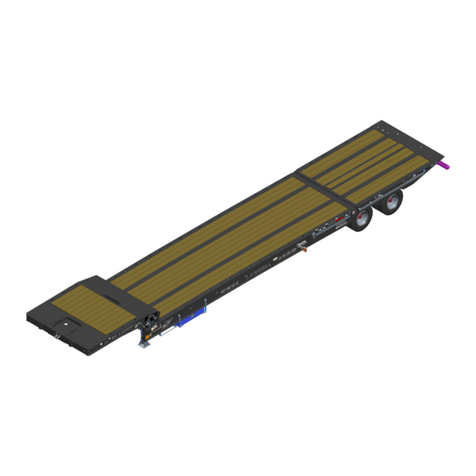
Landoll
Landoll 900D Series Operator's manual
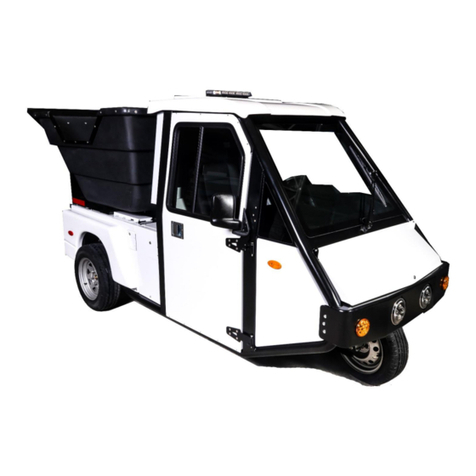
Westward
Westward Go-4 XTR Operator's manual
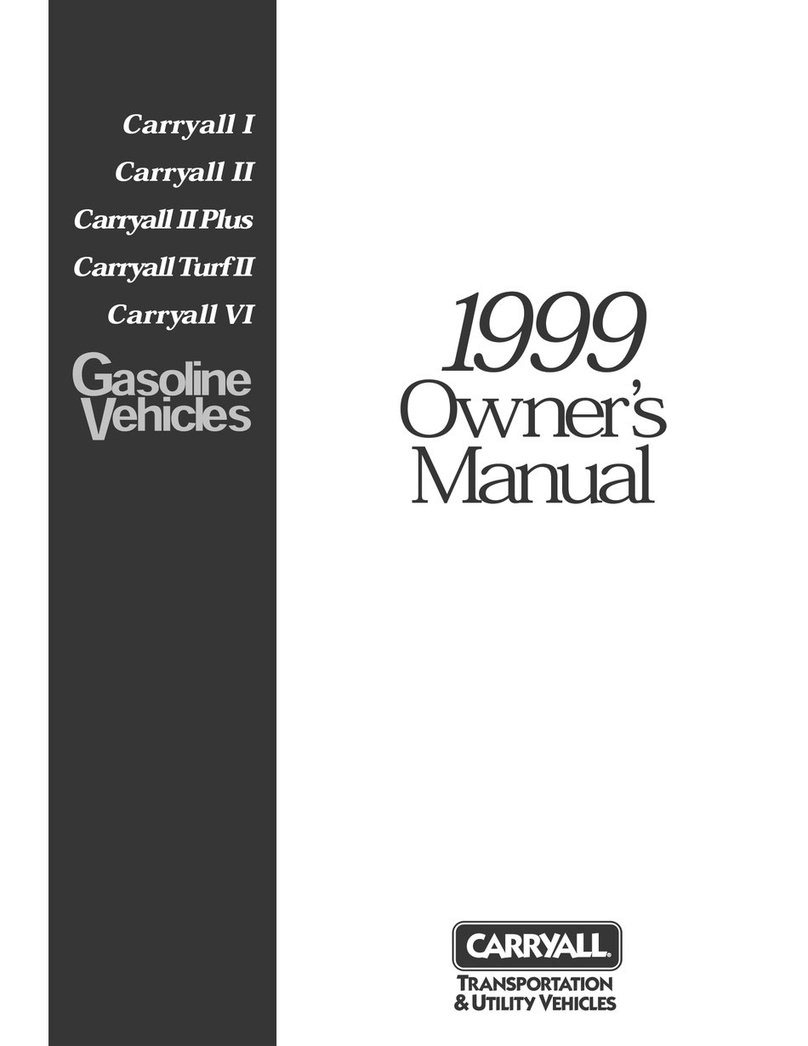
Club Car
Club Car Carryall I 1999 owner's manual

Etnyre
Etnyre Street Flusher operation, maintenance, parts and safety manual

Landoll
Landoll 340 Operator's manual





